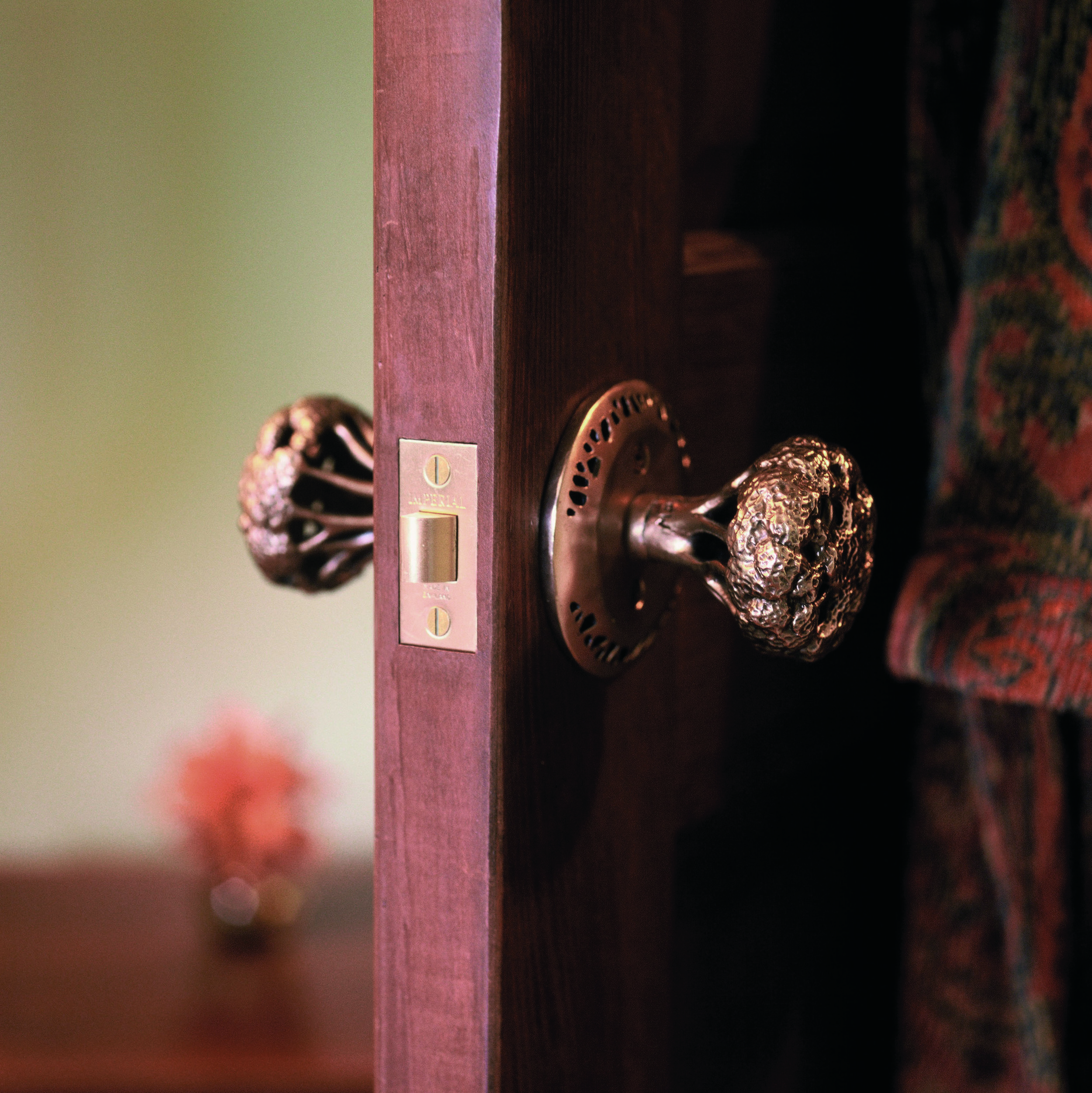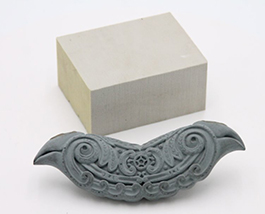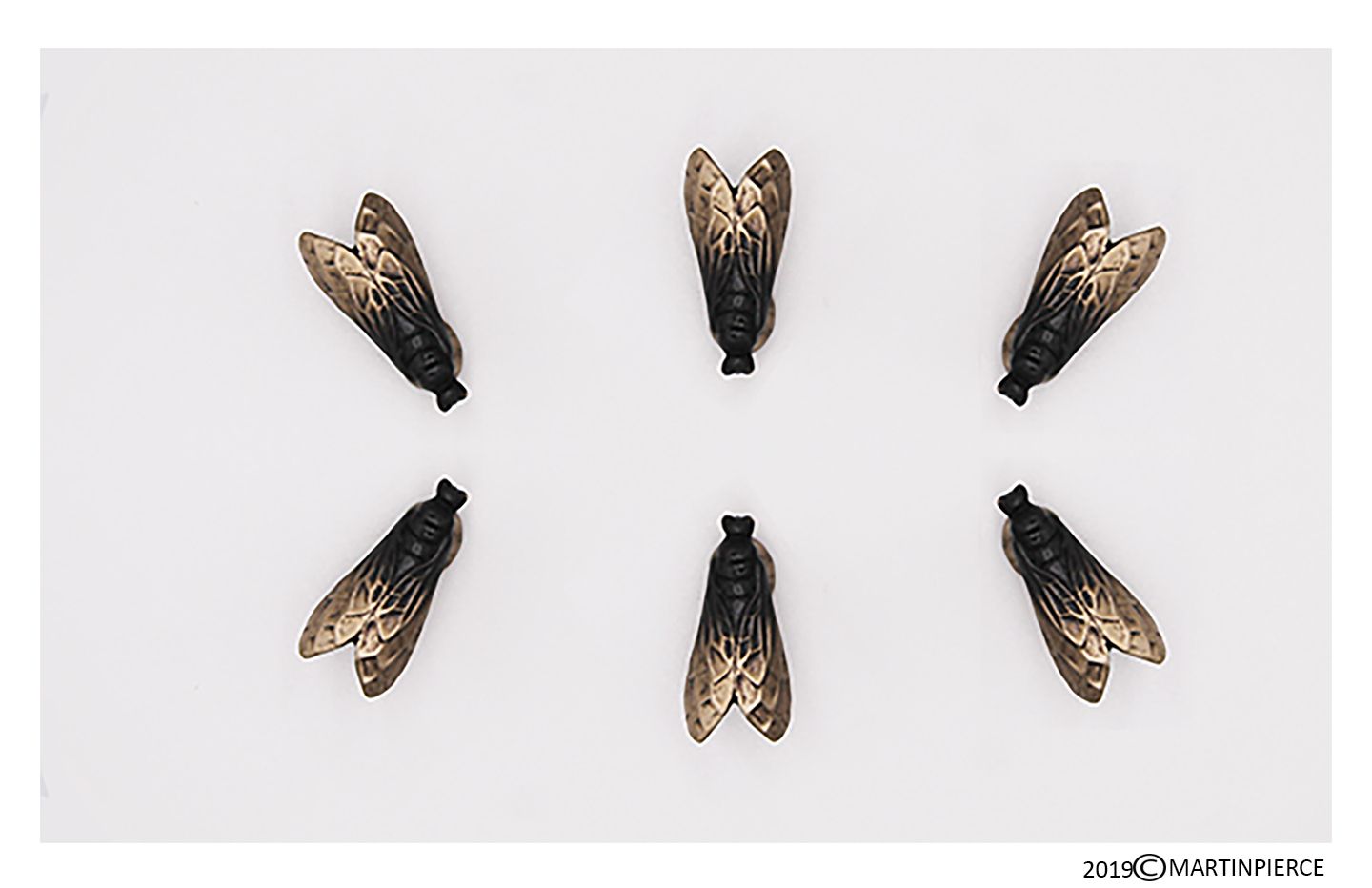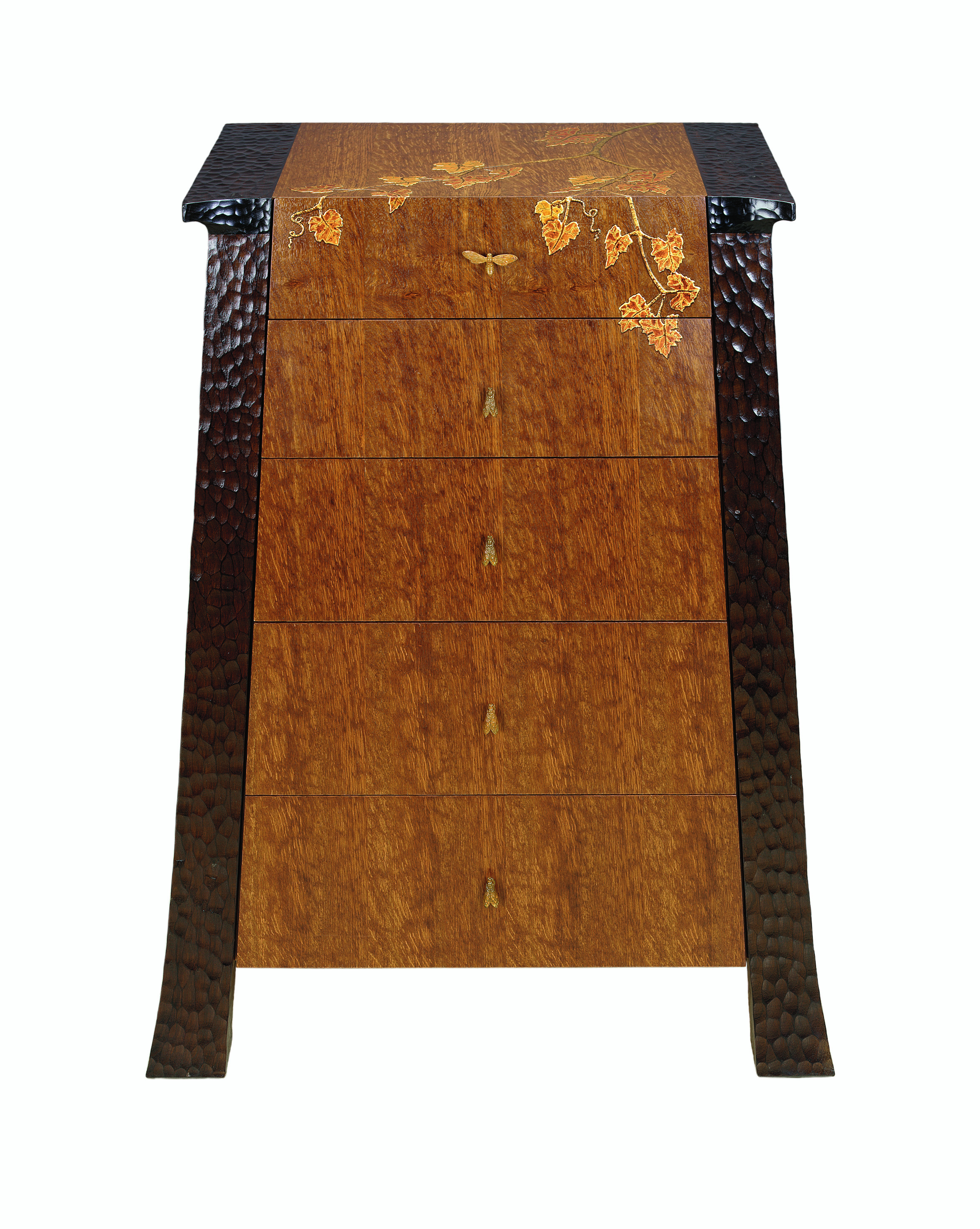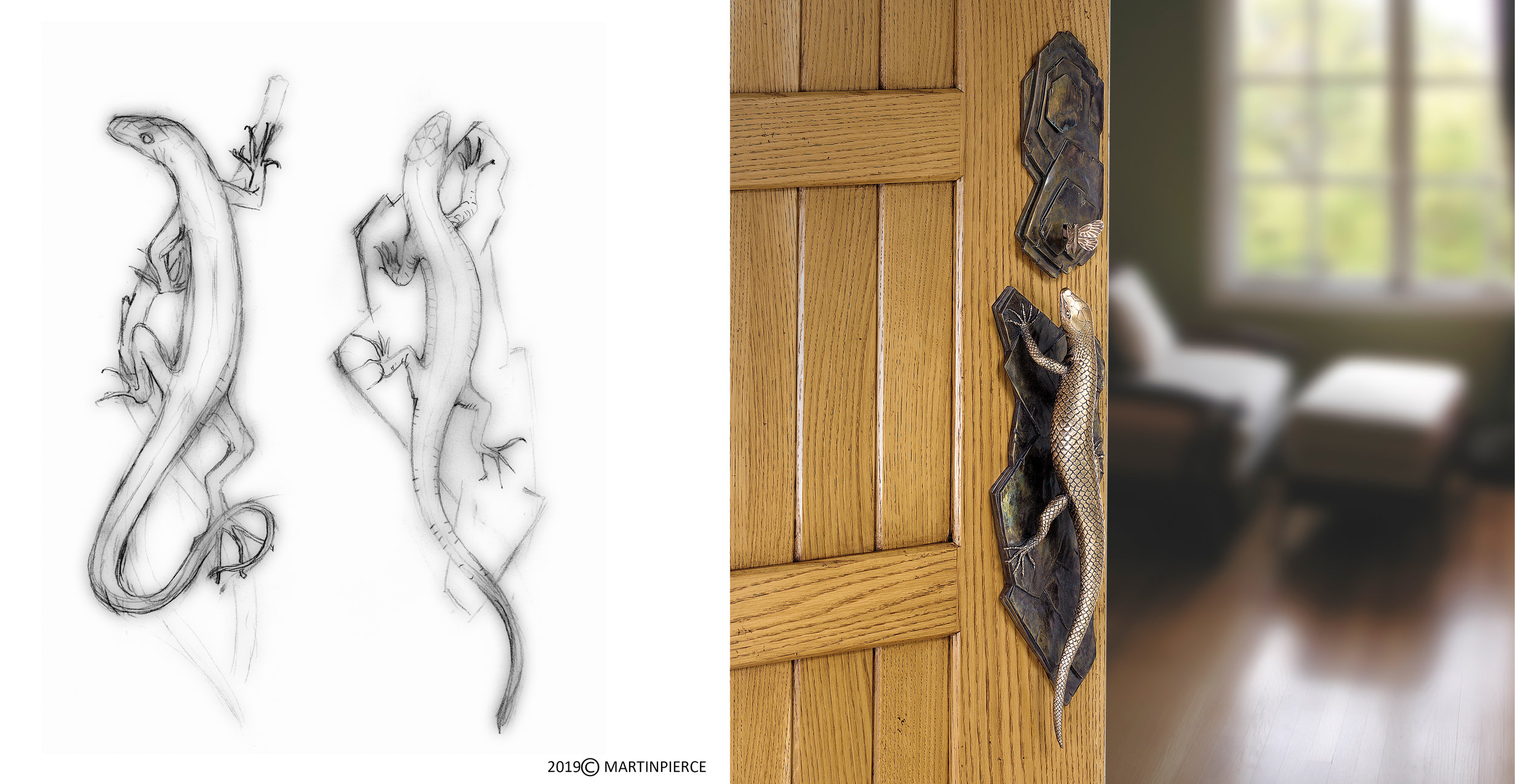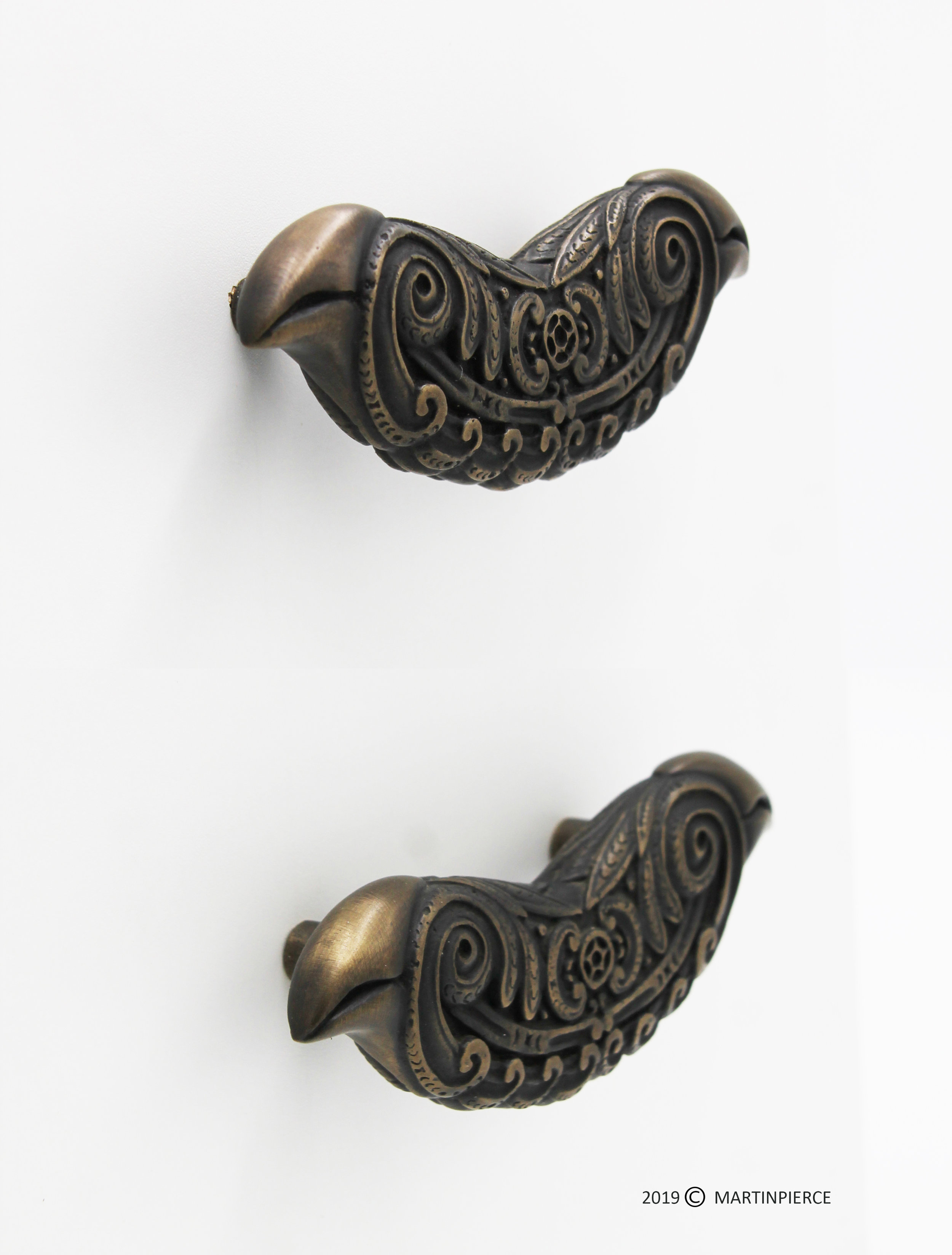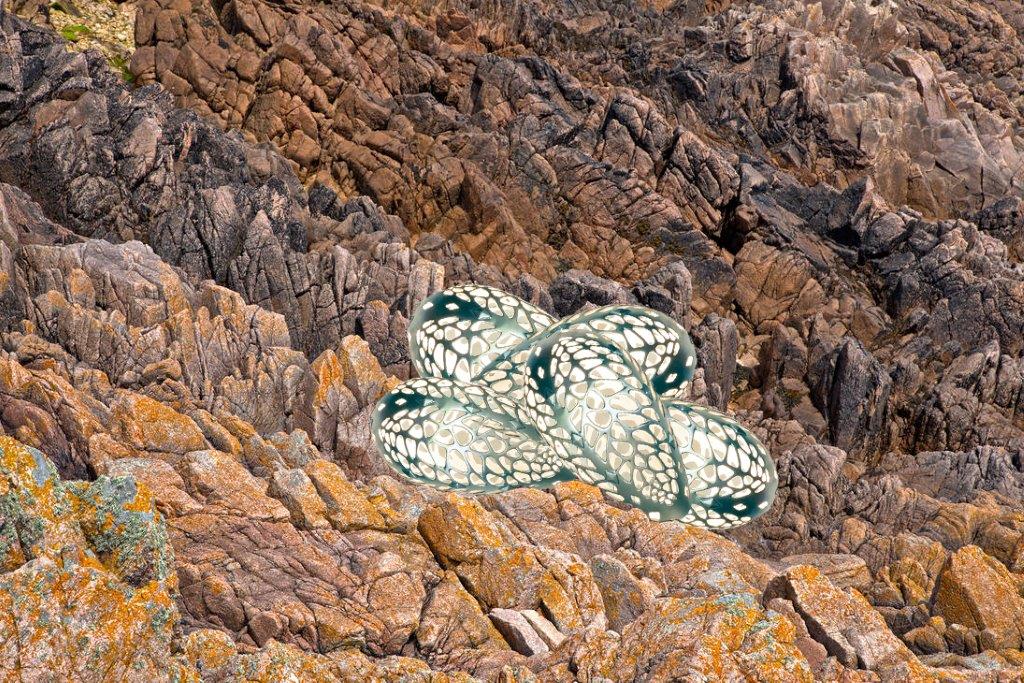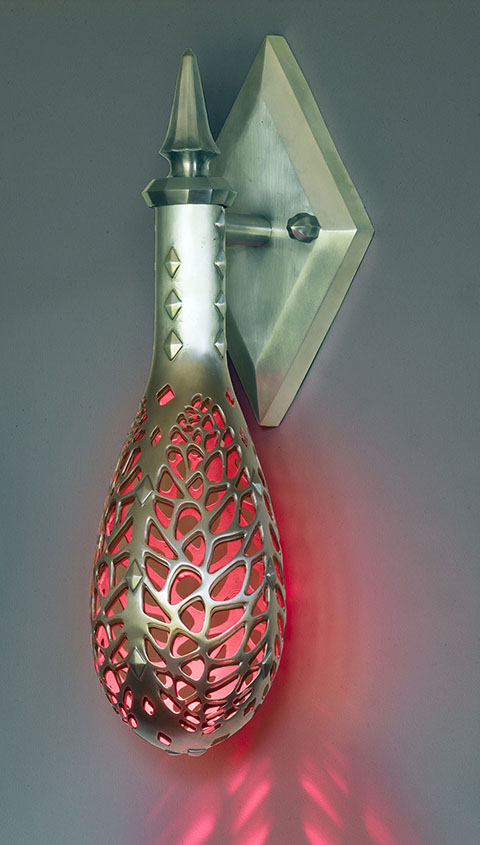We have a variety of door handles that are illuminated, and these are often ordered by those in the hospitality industry looking for accent piece for public areas. This was the case when we were commissioned to create custom large door handles based on our Morphic door pull design.
The client chose a very specific shade of blue which was their brand color, and which reflected the watery environment of their resort. Sea creatures were the inspirational basis for the custom Serpentine and Scroll pulls we designed and fabricated for the resort. The blue background of this piece is created by skillfully powder coating just the interior and by careful masking the face.
Our Coral and Fish illuminated pulls are colored by color diodes that are contained inside the LED light strips that are housed behind the face of the design. The advantage of this form of color is that the different color diodes allow the panel to be programmed for a variety of different color cycles. While the LED panels offer a wide range of color the door must be one that has been constructed with a hollow channel so that wire can be passed along the channel and connected to the panels wiring.
The photos below show these two methods for adding color. The Scroll pulls on the left were treated with an adhesive on the inside only, the face of the handle was masked with a releasing agent and the powdered handle was baked at a high temperature. The coral and fish pulls have color changing diodes and can be set for a specific color or programmed to go through color cycles.
.













